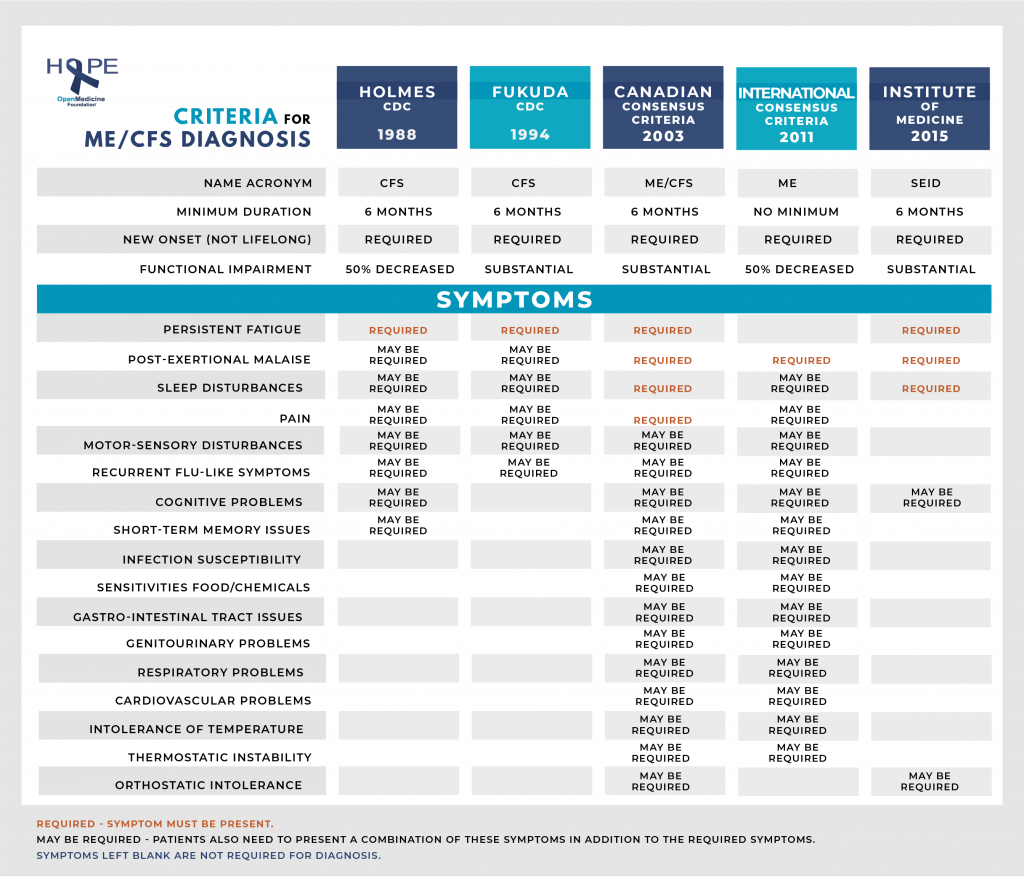Myalgic Encephalomyelitis or Chronic Fatigue Syndrome (ME/CFS) is a complex illness with a complex history. The best way to understand ME/CFS as we know it today is to understand the history of how it was first defined and how the diagnostic criteria has evolved over the past few decades.
Summary of diagnostic criteria since 1988.
What's in a name after all?
History
and ‘Neurasthenia’
In the 19th century the concept of ‘neurasthenia’ was introduced by psychiatrist George Beard, which defined an illness largely found in women with symptoms very similar to ME/CFS.
It was generally triggered by an infection and it was described as a "...condition of nervous exhaustion, characterized by undue fatigue on [the] slightest exertion, both physical and mental... the chief symptoms are headache, gastrointestinal disturbances, and subjective sensations of all kinds.” The diagnosis of neurasthenia declined in the early 20th century as its usefulness and validity were called into question.
and the first definition of ME
Throughout the 20th century, there were about 70 possible documented outbreaks of ME/CFS. The condition went by many names but all were linked by their unknown cause and similar symptoms.
One of the most significant outbreaks in the history of ME/CFS was at the Royal Free Hospital in the United Kingdom. Over 200 staff were hospitalized, and the hospital closed for several months due to an unknown illness. During this time, Dr. Melvin Ramsay of the Royal Free Infectious Diseases department called the illness Myalgic Encephalomyelitis (ME).
Dr. Ramsay's definition remains one of the most accurate clinical descriptions of the illness, and several years later the condition would be recognized by the World Health Organisation in 1969.
Several significant US outbreaks led the CDC to put together a working group to reach a consensus on the definition and clinical description of these illnesses. This group recognized that the many outbreaks had to be known by many other names, including ME. They put together the first description of Chronic Fatigue Syndrome (CFS) in 1988 in order to classify the disease population to improve comparability and reproducibility for research purposes.
In 1994, the definition of CFS was loosened. This criteria has since been criticized for its broad definition that significantly increases the chances of misdiagnosis and impacts the effectiveness research. Furthermore, the name has been faulted for misrepresenting the severity of the illness.
Disclaimer: This website is for informational purposes only. The information provided on this website is not intended to be a substitute for professional medical advice, diagnosis, or treatment.




